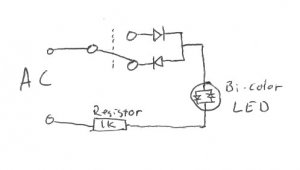Guys,
I'm looking for a way, on my control panel, to indicate which track each trunout is switched for. "Momentary on" toggle switches return to the middle position, and "monetary on" push button switches are just that. a push button.
I'm using Peco electrofrog turnouts with Peco turnout motors.
Of course, my control panel will have a track diagram, with turnout buttons located at the turnout on the diagram. I'm thinking of using the "momentary on" buttons, with two buttons per turnout, one located on each frog on the diagram. i.e. want to switch for the "curved" frog of the turnout, then push the button on the "curved" part of the diagram. But I also want to put a little LED or globe on each part of the turnout diagram, to show which way the turnout is curently switched.
Any ideas?
Currently using DC control not DCC, but will eventually....... umm.... eventually..... go DCC.
I'm looking for a way, on my control panel, to indicate which track each trunout is switched for. "Momentary on" toggle switches return to the middle position, and "monetary on" push button switches are just that. a push button.
I'm using Peco electrofrog turnouts with Peco turnout motors.
Of course, my control panel will have a track diagram, with turnout buttons located at the turnout on the diagram. I'm thinking of using the "momentary on" buttons, with two buttons per turnout, one located on each frog on the diagram. i.e. want to switch for the "curved" frog of the turnout, then push the button on the "curved" part of the diagram. But I also want to put a little LED or globe on each part of the turnout diagram, to show which way the turnout is curently switched.
Any ideas?
Currently using DC control not DCC, but will eventually....... umm.... eventually..... go DCC.




